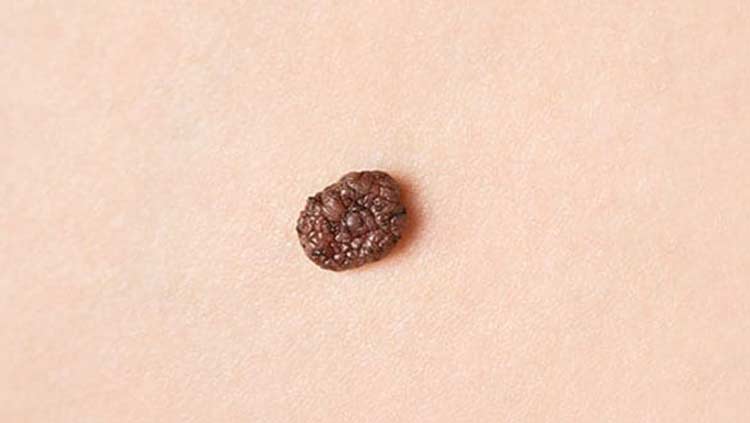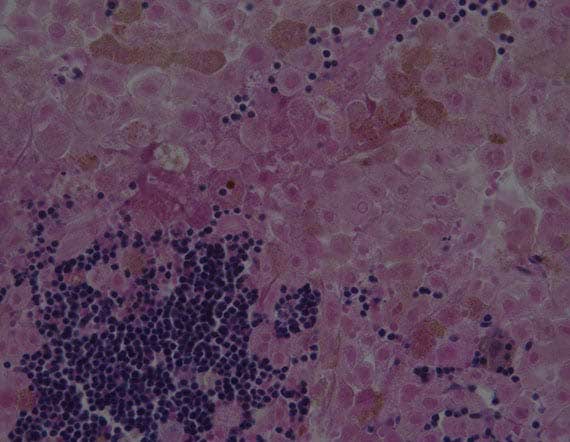
Discover how we can help you spot and receive treatment for foot melanoma.
Melanoma is a form of skin cancer. It can start out as a small growth that produces little or no symptoms. It’s not something that should be ignored once it’s discovered. First formed as a type of skin cell called a melanocyte, melanoma can appear on any part of the body.
- When feet are affected, it may be noticeable on the soles of feet or even under toenails. This is one of the reasons why it’s important to get into the habit of regularly checking feet.
- If detected in later stages, melanoma can be extremely serious and potentially life-threatening.
Which Types of Melanoma Could Affect Feet?
There are several different types of melanoma that may affect feet. Acral lentiginous melanoma (ALM) accounts for more than half of all melanomas that affect feet. More likely to appear on individuals with darker skin, ALM can sometimes be difficult to detect in its early stages. It typically shows up as a light patch of discoloration on the feet.
More likely to affect older adults, nodular melanoma appears as small, rounded lumps. Superficial spreading melanoma (SSM) is the most common form of melanoma. It’s unique in that it grows outward and spreads across the skin instead of developing inwards. It usually appears on the top part of feet.
Amelanotic melanoma has no color to it, which is why it may be misidentified as being a benign skin abnormality. Diabetics, in particular, may assume that amelanotic melanoma is actually a common type of foot sore that appears on feet affected by poor circulation.


What Causes It?
Any type of skin cancer may be caused, in part, by exposure to ultraviolet (UV) light. UV light can from natural sunlight or artificial sources of light like what’s produced in tanning beds. UV light changes how DNA in skin cells functions, affecting how skin cells divide and grow. Genetic changes may contribute to melanoma developing on areas of skin not regularly exposed to sunlight, like the soles of feet. Individuals with a rare genetic disorder called xeroderma pigmentosum that inhabits the repair process that normally takes place in damaged cells may be more susceptible to skin cancer. Risk factors also include:
- Having existing moles
- Pale skin
- Family history of skin cancer
What Signs and Symptoms Should You Look For?
While moles may be harmless, ones that appear on feet should be monitored for changes. Melanomas, which sometimes show up as new moles or discolorations on feet, often have a black and blue area. When doing a visual inspection, look for lesions that appear uneven, growths that are multiple colors, lesions bigger than 6mm, and progressive changes in size, shape, and color. Some melanomas aren’t painful. Others may produce the following symptoms:
- Itchiness around the lesion
- Pain when lesions are touched
- Tenderness
- Redness or swelling
How Is Foot Melanoma Diagnosed?
Foot and ankle cancers are sometimes difficult to identify since lesions may be mistaken for sores or other irregularities. Initially, lesions are usually visually inspected. A patient’s medical history will also be considered to determine if there may be a genetic predisposition to developing cancer.
If foot melanoma is suspected, a referral may be made to a foot specialist for further evaluation. Images tests may be performed to determine whether or not the cancer has spread to other tissues in the affected foot or ankle. Genetic testing is sometimes done to check for certain factors that may affect how cells behave. A biopsy is typically done so a tissue sample can be examined to check for cancer cells.
How Is It Usually Treated?
When identified early, surgery is often the most effective treatment for melanoma. If the cancer has spread to other parts of the foot or into the lower legs, treatments that include radiation therapy, immunotherapy, and chemotherapy may be recommended. Targeted therapy and regular immunotherapy sessions may continue if there are still signs of melanoma after surgery.
Melanoma accounts for about one percent of all skin cancers. It’s estimated that anywhere from 3 to 15 percent of all melanomas appear on feet. When checking feet for possible signs of an unusual growth, keep the acronym CUBED in mind. Look for a change in color. Pay attention to anything that’s bleeding or enlarged. Lesions that take longer than expected to heal could also be a sign of something that requires attention. If you notice any of these things while inspecting your feet, a foot specialist can determine whether or not it’s melanoma.

